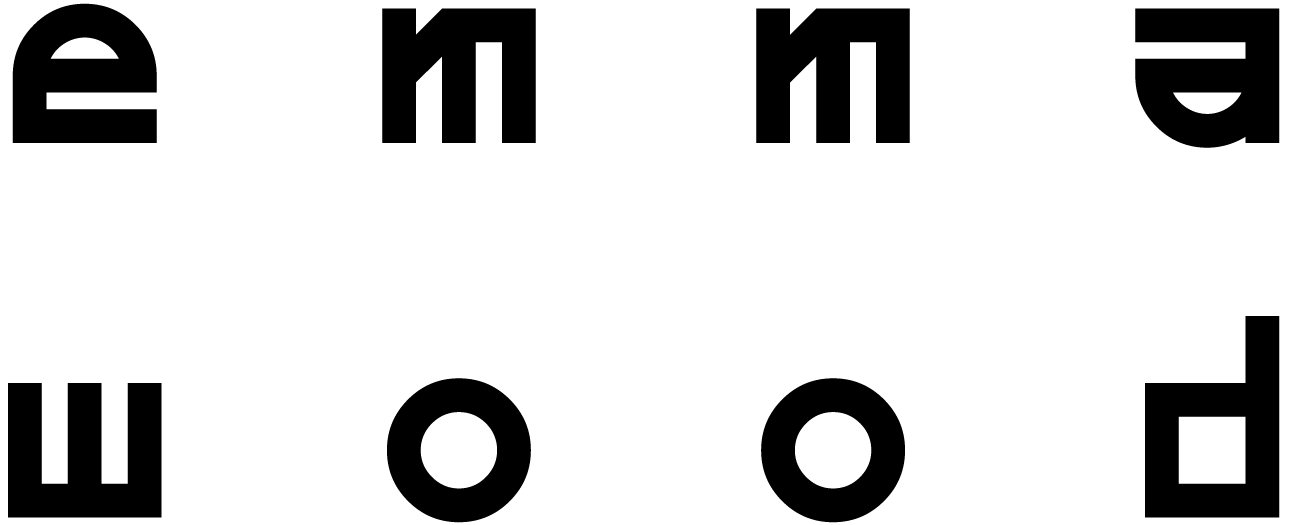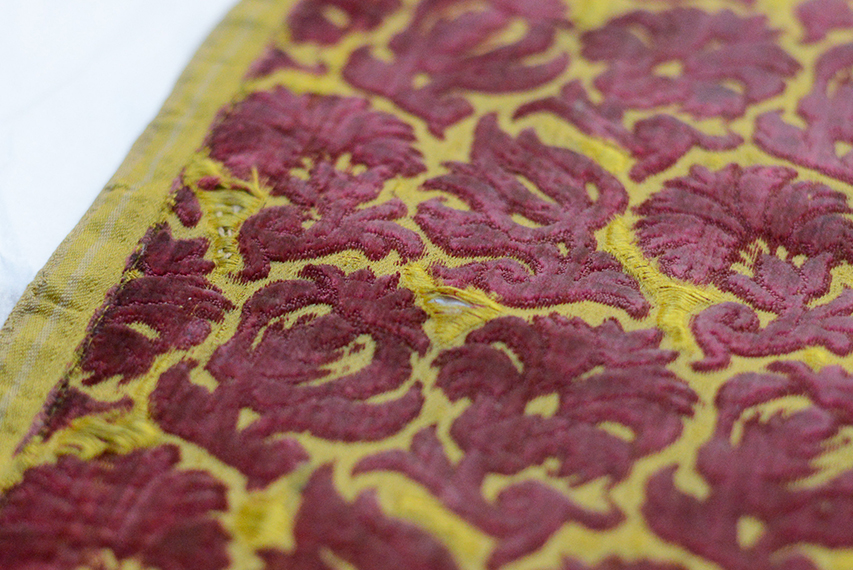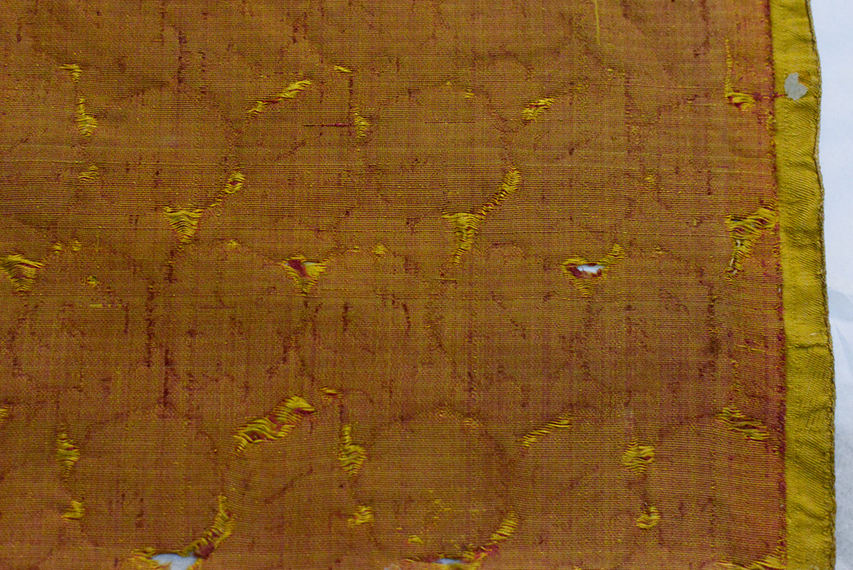historic velvet
Gathering clues from 15th century velvet.
When in London for the 2023 Textile Intersections conference, I had the chance to visit Cosprop, the historic costumier, to have an up-close look at their remarkable collection of historic hand-woven velvets. This was my first chance to engage with velvet woven using the technique I am recreating in this project, and it gave me the opportunity to study the structural construction of the velvet, to figure out some technical specifications, and to generally gush over such precious cloth.
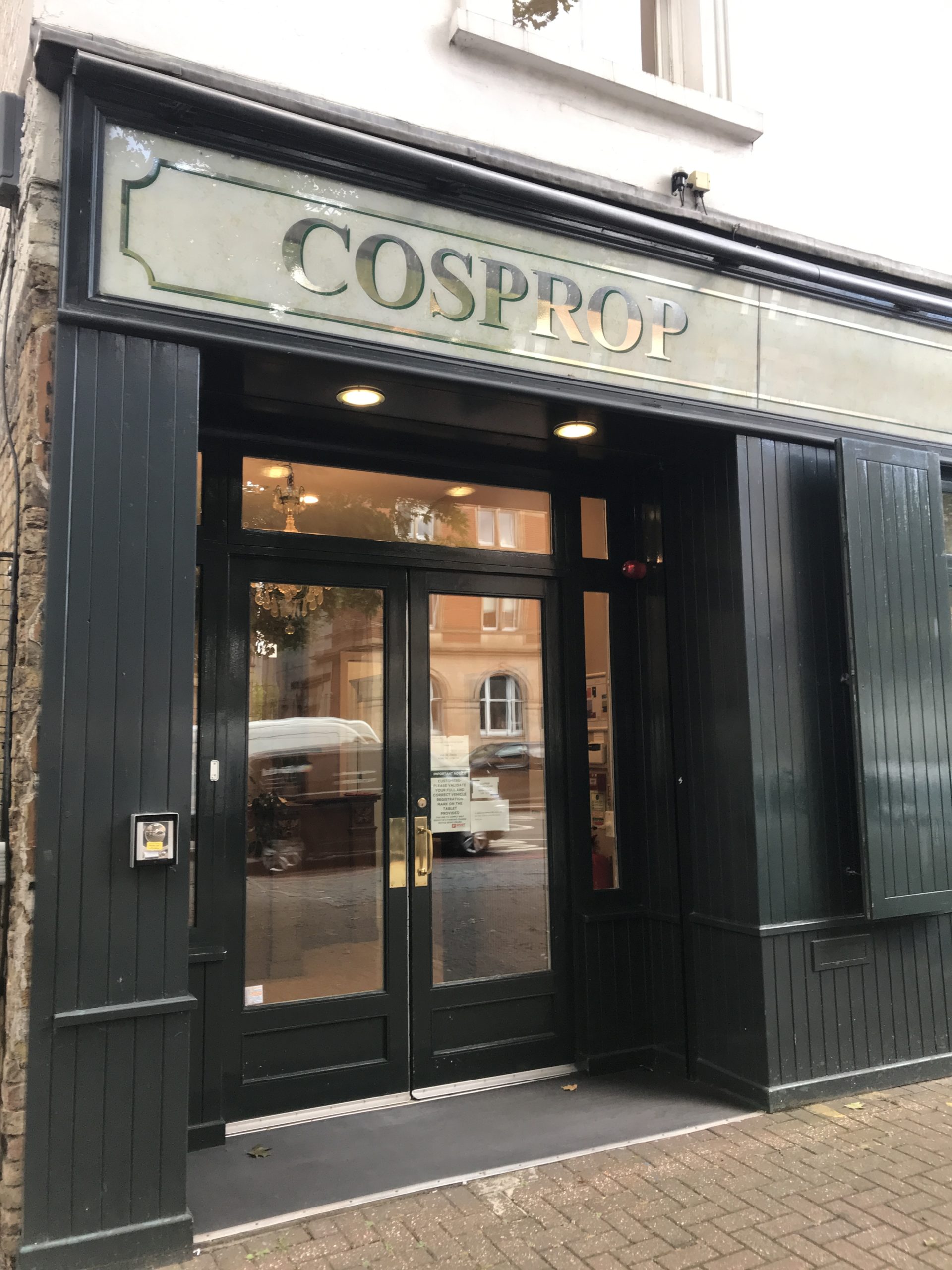
welcome to cosprop
Cosprop is located in North London, and entering is like stepping into Mary Poppins’ carpet bag: the modest exterior belies the never-ending warren of rooms, corridors, and high-vaulted ceilings, all brimming with every kind of historical prop and garment imaginable.
I was given access to their collection of historical velvet by Barbara Kloos, Cosprop’s historic collection curator. Barbara set aside the delicate pieces of velvet in a small room, and left me to pour over them and see what I could learn.
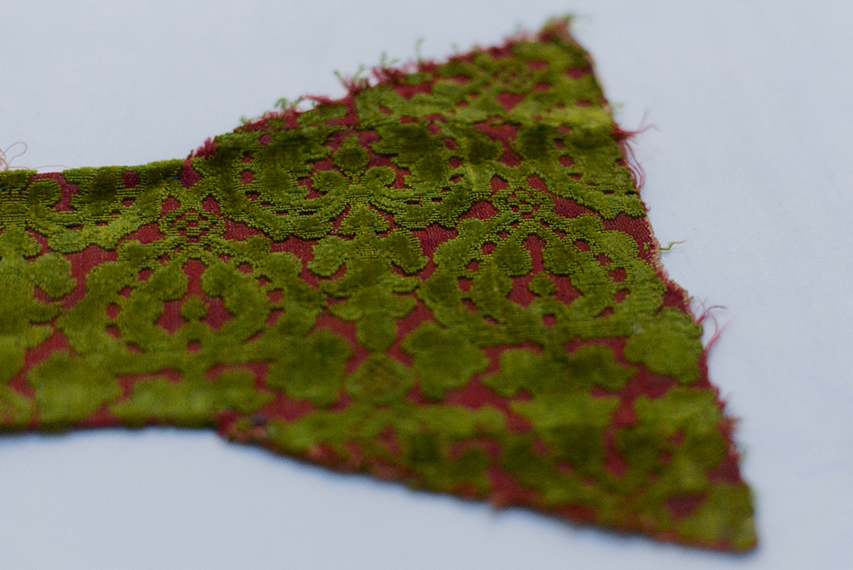
touching history
The first thing that struck me about Cosprop’s velvet collection was how vibrant the colours were and how much integrity remained in the woven cloth. In a number of the pieces, the ornate patterns still had clearly defined edges. The sharp difference between the uncut and cut pile highlighted how much visual and textural impact the contrasting methods can have.
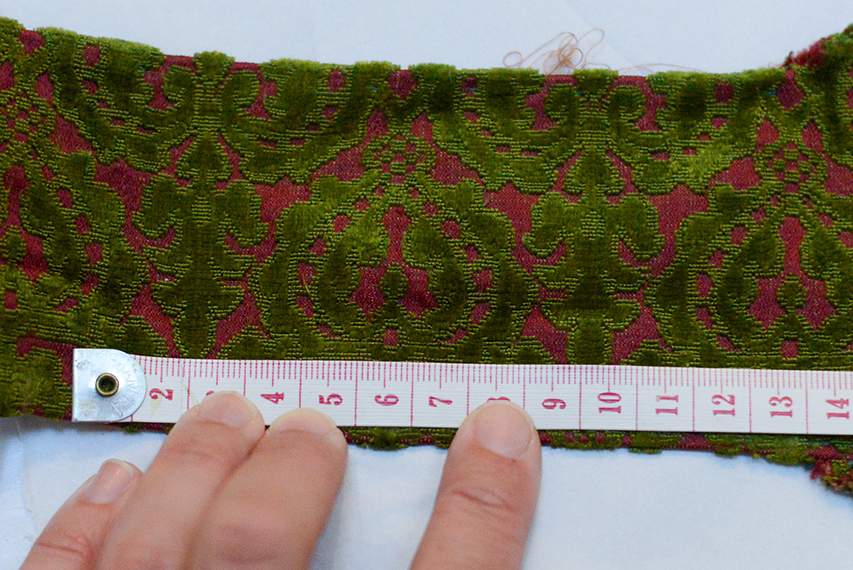
I used a tape measure and a fine pin to mark out how many loops per cm were featured in this tightly-woven velvet, focusing only on the uncut loops as they are easier to separate than the cut pile. I counted fifteen loops per cm, which correlated with calculations I had made based on historical velvet diagrams and texts. This gave some reassurance I had been hoping to find, that my interpretation of the technical velvet sources was correct.
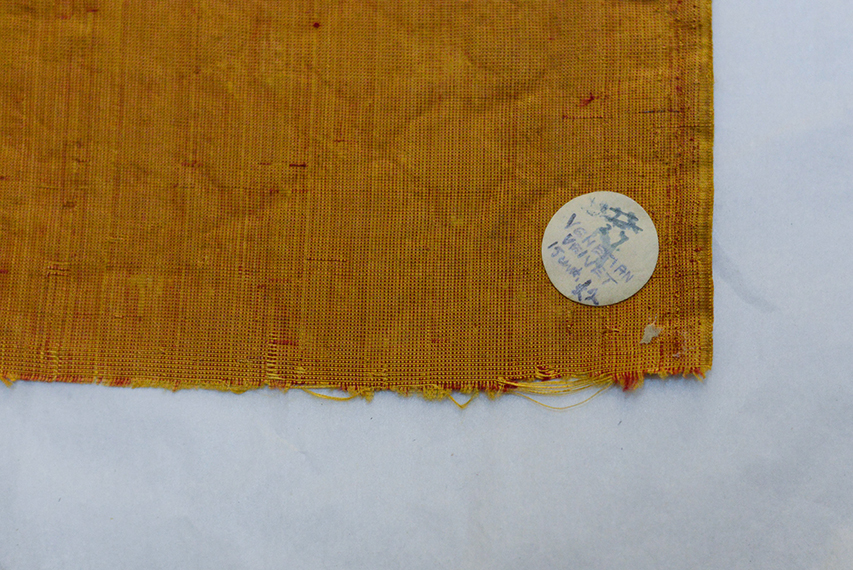
15th century velvet
Two of the velvet samples were identified as being woven in Venice in the 15th century, and these fabrics were remarkable to me in a number of ways.
The fabrics had experienced some disintegration and some of the design had therefore eroded. However, colour vibrance and distinction between cut and uncut pile was very impressive. Seeing where the patterns had begun to erode suggested to me that smaller sections of velvet pile are structurally weaker than larger sections. Once these smaller sections of pile are rubbed or worn away, the surrounding cloth loses its integrity and begins to fray.
The reverse of the cloth provided a lot of information, which I have only begun to unpack. Weft order and weave structure are much easier to see on the reverse, and I hadn’t expected to be able to see quite so much detail. I felt unprepared and under-equipped to decipher all the technical information that was embedded in these samples, since they really call for being examined underneath a loupe and/or microscope, and for being compared to contemporaneous technical documentation.
what next?
The information contained in these velvets is incredibly helpful, but I was frustrated at not having the correct equipment with me to excavate it. Once I have the first test samples of velvet woven, I would like to return to Cosprop, with a loupe, technical documentation and my macro lens, and see what new things I can learn.
Datenschutzerklärung — Impressum
©Emma Wood 2024
